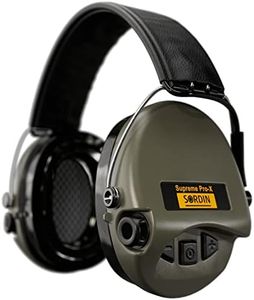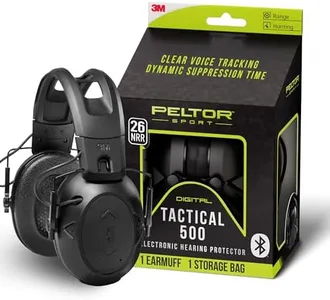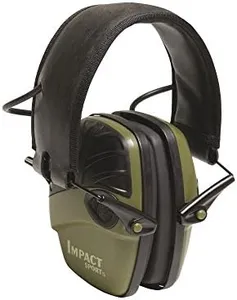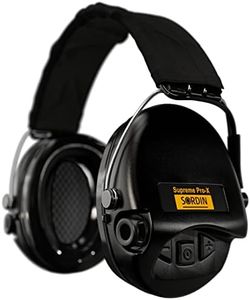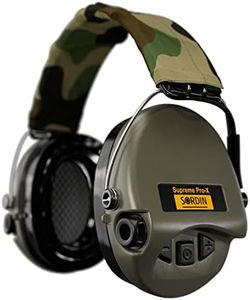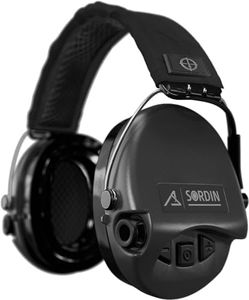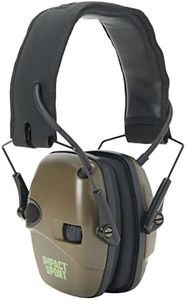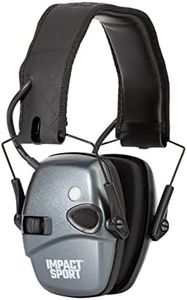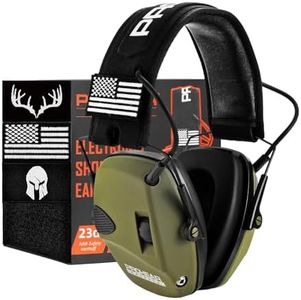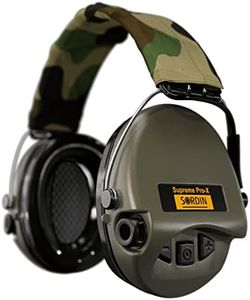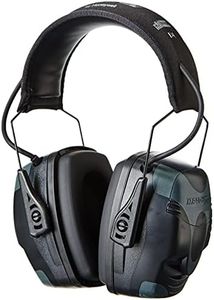We Use CookiesWe use cookies to enhance the security, performance,
functionality and for analytical and promotional activities. By continuing to browse this site you
are agreeing to our privacy policy
10 Best Hunting Earmuffs
From leading brands and best sellers available on the web.Buying Guide for the Best Hunting Earmuffs
Choosing the right hunting earmuffs is important for both comfort and safety during your time outdoors. Earmuffs protect your hearing from the loud sounds of gunfire, help you stay aware of your surroundings, and can even allow for better communication with others if they have advanced features. When shopping for hunting earmuffs, think about where you'll be using them, for how long, and what kind of protection and features you need. The right earmuffs strike a balance between noise reduction, comfort, and situational awareness.Noise Reduction Rating (NRR)Noise Reduction Rating, or NRR, tells you how much noise the earmuffs can block out, usually given in decibels (dB). This is very important because louder gunshots can damage your hearing over time. Lower values (around 15-20 dB) provide basic protection, which may be fine for small-caliber firearms or occasional shooting. Mid-range values (21-26 dB) are suitable for regular hunting and most types of firearms, giving a good balance between protection and being able to hear what’s going on around you. High NRR (27 dB or more) is best if you’re using powerful guns or will be exposed to repeated shots in a short time. Pick the NRR value based on the type of weapons you use and how much protection you want versus how much you want to interact with your environment.
Electronic vs. PassiveEarmuffs can be passive (basic ones that simply block noise) or electronic (which use microphones and speakers to let you hear quiet sounds like voices but block out loud noises instantly). Electronic models are great for hunters who want to communicate or listen for wildlife, as they make soft sounds clearer while keeping your ears safe from gunfire noise. If you just want simple protection and don't mind a 'quieter world,' passive earmuffs work well. Think about how much situational awareness and communication you need before deciding between electronic and passive.
Comfort and FitComfort and fit are all about how the earmuffs feel on your head and ears, especially if you’ll be wearing them for hours. Lighter earmuffs with soft padding and adjustable headbands are more enjoyable for long hunts. Oversized or tight earmuffs can cause headaches or slip off easily. If you wear glasses, look for designs that fit well without causing pressure points. Try to choose earmuffs that fit your head size, stay snug but not tight, and can be worn over hats or with other gear as needed.
Durability and Weather ResistanceHunting often takes place in rough conditions, so earmuffs need to withstand some abuse and possibly bad weather. Durability is about how well the earmuffs hold up to bumps, drops, and frequent use. Weather resistance means they can handle some exposure to rain, humidity, and dust. If you hunt mainly in mild weather or from a fixed spot, basic durability is enough. But if you move through thick brush, hunt in the rain, or travel a lot, look for rugged earmuffs that specifically mention resistance to water and dirt.
Power Source and Battery Life (for Electronic Earmuffs)If you go with electronic earmuffs, they’ll need a power source, usually replaceable or rechargeable batteries. Battery life affects how long you can use them between charges or battery swaps. Short battery life (a few hours) might work for half-day trips, but for longer outings, look for earmuffs with batteries that last all day or more. Consider how easy it is to change batteries or recharge them in the field. Your choice depends on how long you hunt and how much time you spend away from power sources.
